
© 2010-2021 by Fine Arts of the Southwest, Inc. All rights reserved.
Unauthorized reproduction or use is strictly prohibited by law.
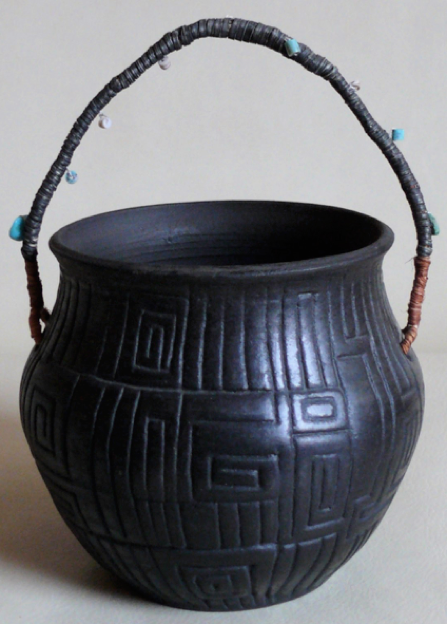
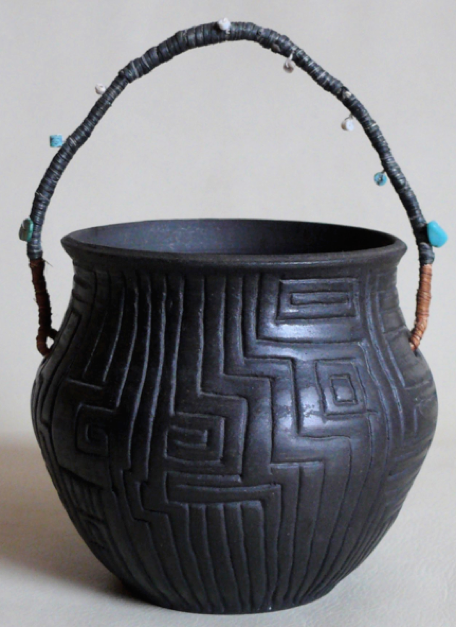
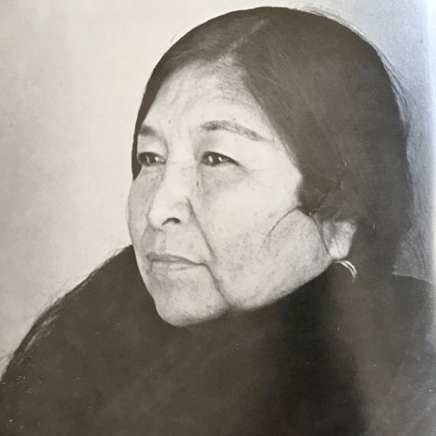
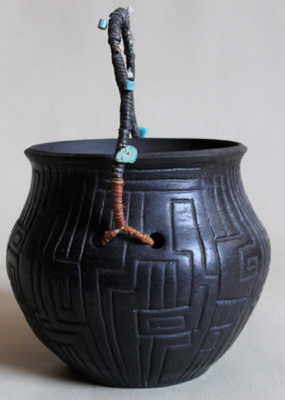
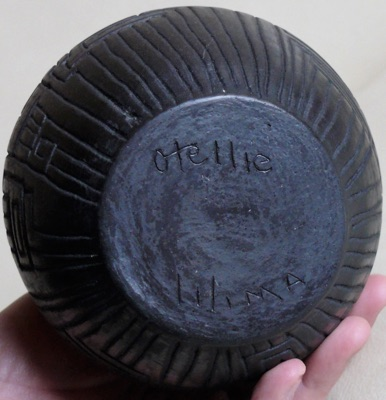
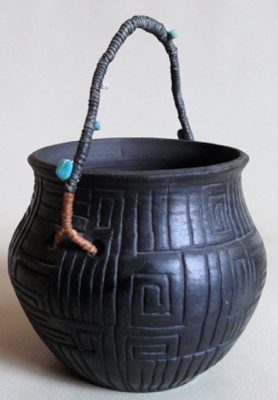
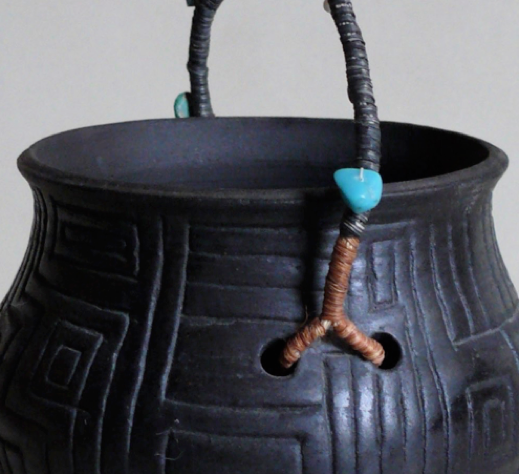
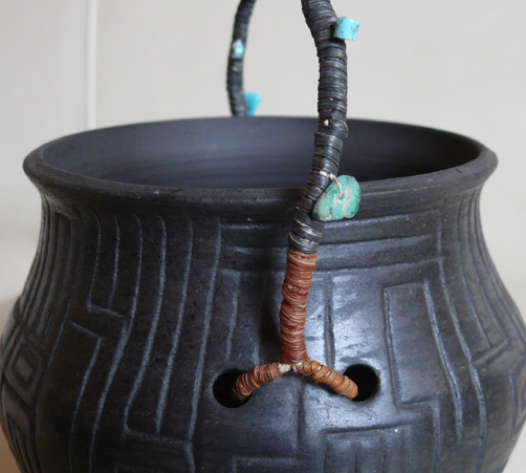
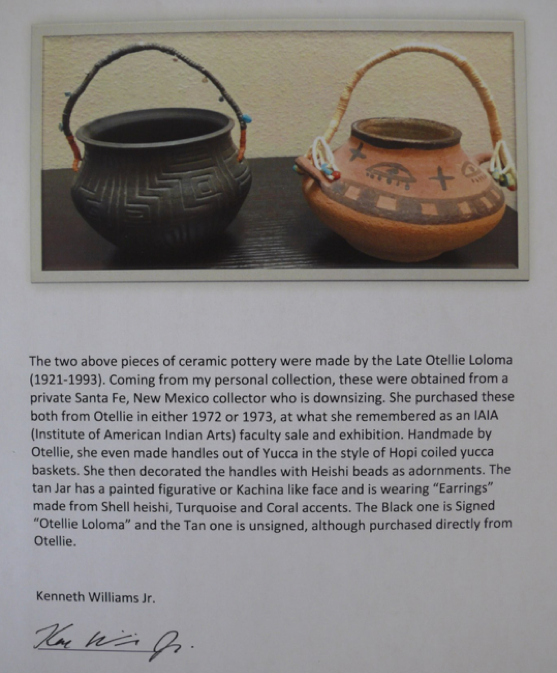
An incised black ceramic jar with a handle
made of two colors of coiled and dyed yucca fiber by Otellie Pasiyeva Loloma, c.1972-73
Otellie Pasiyeva Loloma (1921-1993) is the “other” Loloma; an extraordinary artist in her own right and later an important educator who was also Charles Loloma’s first wife and partner. In the 1940’s they studied ceramics together in New York and in the 1950’s launched a ceramics company in Scottsdale, Arizona making pottery which they referred to as “Lolomaware”. While Charles increasingly moved into making jewelry exclusively in the late 1950’s and early 1960’s, Otellie continued making ceramics until her death in 1993.
Otellie’s ceramics are unique and immediately recognizable in a number of ways; for her formidable command of an entire encyclopedia of ceramic techniques including the use of various clays and glazing techniques and incising and painting and most of all for her distinctive stylized Hopi-influenced style, exploring shapes and designs and forms of historic Hopi pottery through the mind and eye of a sensitive Modern native artist. Otellie’s ceramic works are very highly regarded and quite difficult to come by, this is only the fifth or sixth piece of hers we have had in the past 30 years. Otellie’s pieces are held in many important collections, including several in The Smithsonian Institution’s National Museum of the American Indian in Washington D.C.
Photo © Guy Monthan
"When I teach which is so important to me and my own clay work, I try to instill belief in my students whether Indian or non-Indian. When that belief is alive, their work is alive. This belief and aliveness gives the student their strength in what they do in any art form or life work. This belief and aliveness is what makes me the artist I am...it is what I am all about”.
-Otellie Loloma interview with James
McGrath for The Santa Fe Reporter, 1991
This particular vessel is a perfect demonstration of all of this; instantly identifiable as an Otellie piece.
The vessel's body is 4 1/2” in height and 5” in diameter. The height of the handle rises a further 3” for a total height of approximately 7 1/2”. This jar is carved all the way around its surface in a complex geometric pattern and it is further decorated on the yucca fiber handle with a series of 9 beautifully woven in small turquoise and white shell beads. The yucca handle also has two different colors of dyed yucca fiber, a deep grey-black and a vibrant orange-red.
The use of the dyed and coiled yucca fiber handle is yet another manifestation of Otellie’s interpreting old Hopi traditions in her own unique modern way; yucca fiber baskets, decorated placques and trays are common utilitarian and art forms in the Hopi villages, particularly on Second Mesa, Otellie’s original home. The jar is in excellent original condition and it is properly signed “Otellie Loloma” on the bottom and it also has an impeccable provenance, it was originally purchased directly from Otellie Loloma at an Institute of American Indian Arts faculty exhibition and sale in 1972-73. The jar comes with a certificate of authenticity and provenance from its second owner, Kenneth Williams, Jr., Director of The Case Trading Post at The Wheelwright Museum of the American Indian in Santa Fe.
This is a unique and lovely piece from the talented hands and inspired mind of a truly incredible artist.
SOLD